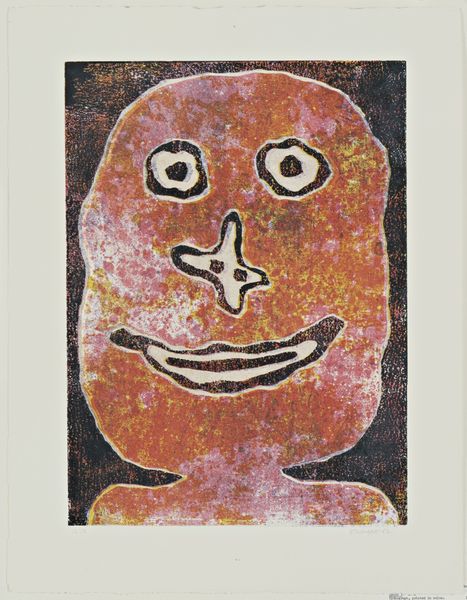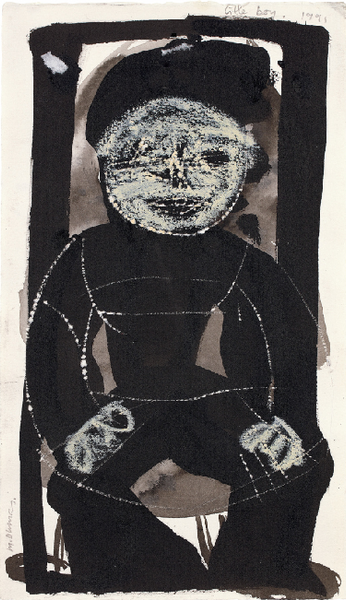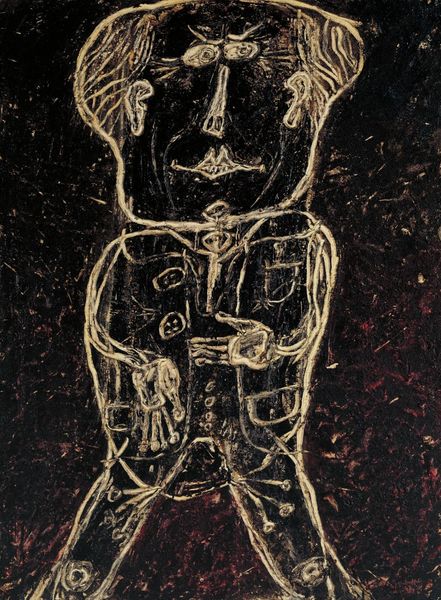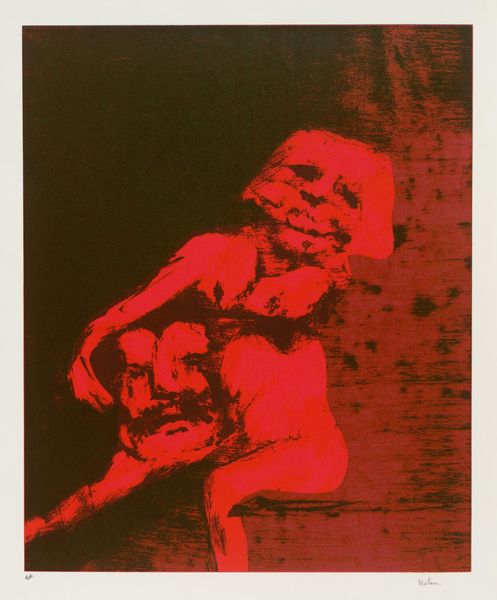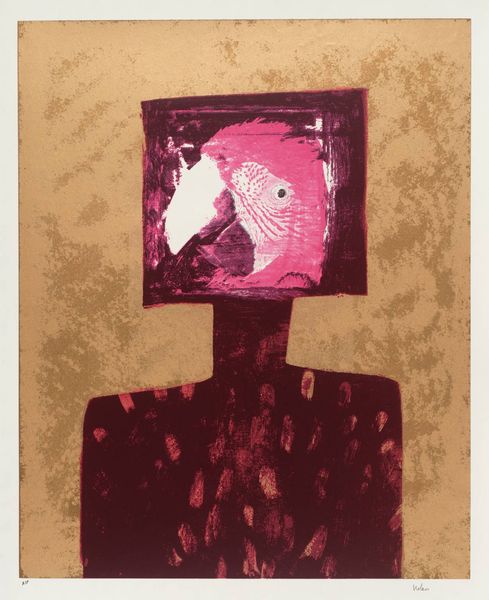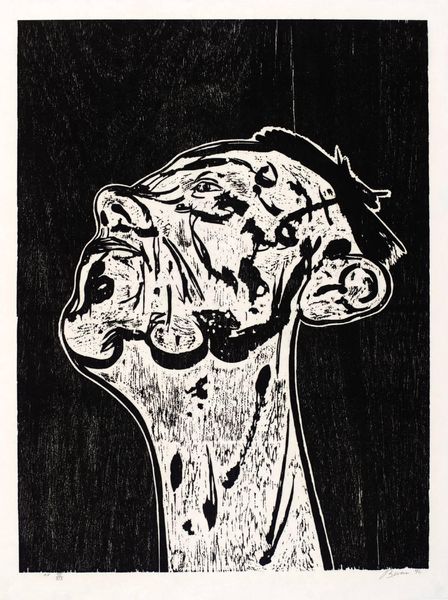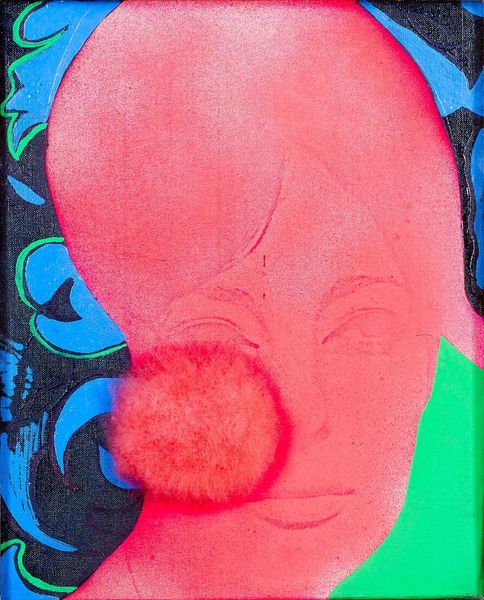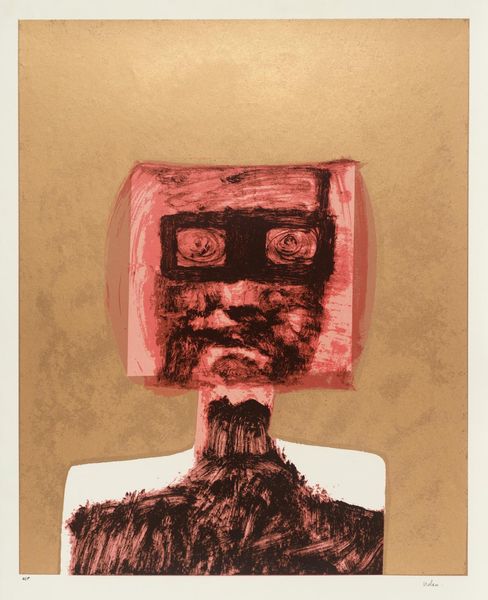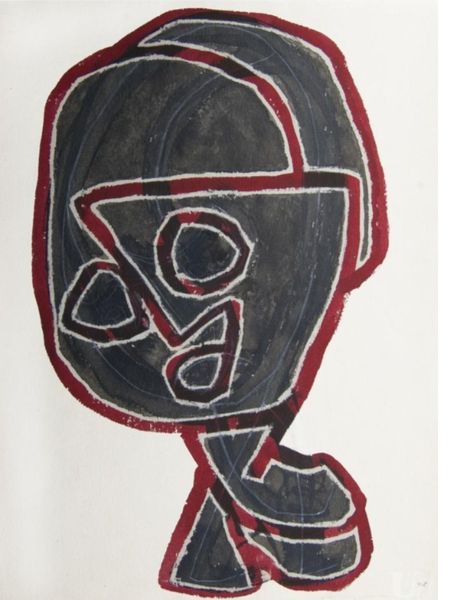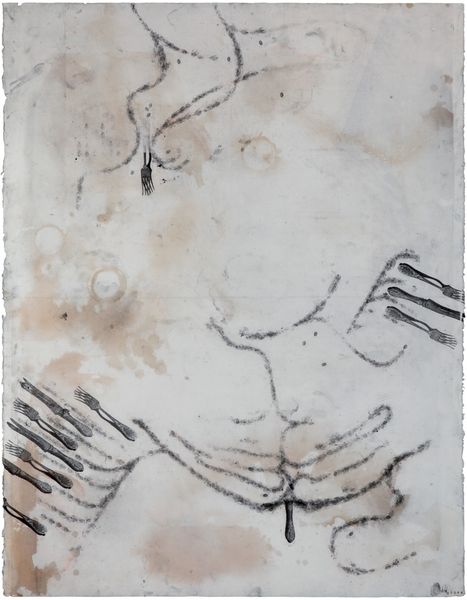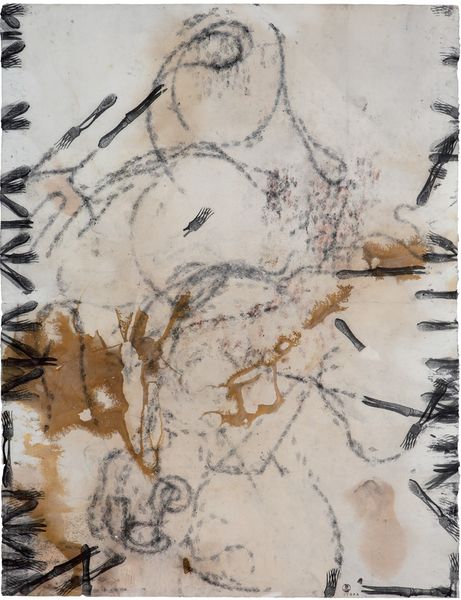
Copyright: Jean Dubuffet,Fair Use
Curator: Looking at "Figure in Red," created by Jean Dubuffet in 1961 using mixed media, I’m immediately struck by the raw, almost primal feel. Editor: Yeah, "primal" hits it. It's like a kid's drawing but with this dark undercurrent. All those splotches… like a face seen through a dirty window. I don't know; there's something kind of unsettling, like it’s about to say something… not pleasant. Curator: Absolutely. Dubuffet was interested in Art Brut, art created outside the boundaries of official culture, like graffiti or works by the mentally ill. This interest clearly resonates within the archetypes we discover in "Figure in Red," tapping into the deep roots of human expression that bypass conventional refinement. The palette—dominated by raw reds and set against that cosmic, swirling backdrop—speaks to this. Editor: Cosmic is an interesting word choice... it reminds me of cave paintings under a night sky or something. And that red... you could interpret it as violence, sure, but also warmth. Maybe that's naive of me. Are the splotches intentional or coincidental— happy accidents perhaps? They're quite nice. Curator: Given Dubuffet's methods, it's most likely both deliberate and spontaneous, building layer upon layer of symbolic meaning. Red, universally, evokes such a wealth of associations from blood and passion to anger and energy. Consider the figure’s wide, staring eyes and simplified mouth…they're emblems of our fundamental selves, vulnerable yet present. Even the figure's gestures seem evocative – open, defenseless even... Editor: Or perhaps confronting, who is to say, the "viewer," or the viewer's unconscious projections of course. I can see myself in this. I think most could. But in general, I have this sense that he doesn't ask to be understood at all. So…is all the symbol interpretation maybe reading too much into it? Is that part of what makes Dubuffet and "naive art" so potent, its resistance to easy explanations? Curator: Perhaps, yet these raw expressions are rich fields for us, as interpreters of image. Dubuffet wanted us to question our expectations of art, to peel back the layers of refinement and engage with the directness of human experience. He allows, by choice, that rawness to come forward for the "viewer" in the art experience. Editor: A pretty successful invitation, I’d say. Now I need to go find myself a nice dirty window to look through. Curator: Indeed, to consider again, a figure formed within the "everyday," reflecting ourselves back to ourselves.
Comments
No comments
Be the first to comment and join the conversation on the ultimate creative platform.
